Two weeks in Switzerland – Lucerne
Table of contents for Switzerland
- Two weeks in Switzerland – Part I
- Two weeks in Switzerland – Lucerne
- The walking tour of Zurich
Lucerne (Luzern in German), is situated on the western tip of Lake Lucerne, which lies at the geographical and spiritual heart of Switzerland, where the tops of the mountains are covered with snow and their sides flanked with glaciers. Standing at the foothills of the St. Gotthard Pass, the lake winds deep into the Alpine Ranges of Central Switzerland, Lucerne, thus is a fabulous starting point for many rewarding excursions to the scenic places of this most beautiful part of the world.
The river Reuss splits the town and flows rapidly to the northwest, where the lake ends. The Lake Lucerne also known as Lake of four cantons – Uri, Schwyz, Nidwalden and Obwalden, is also popularly known as the William Tell Country, the legendary figure from Uri countryside who supposedly paved way for formation of the Swiss Confederation.
On a Wednesday morning, October 5th, sitting in 5.28 morning bus, I and my wife were heading for Gare Cornavin to board the 6.14 train for Lucerne. Train which arrives from Geneva Airport came dot on time and we boarded it immediately on its arrival. While we were settling down, an announcement first in French and then in German made us to realize that owing to some technical problems, the train wasn't going any farther. Like other passengers, we also de-boarded and not knowing what to do, we thought of going to the "information counter". Seeing our perplexed faces, a young lady came forward and after wishing " bonjour" (good morning in French) asked hesitantly if we were heading for Lucerne and told us that the train stationed at the opposite platform would go to Olten, from where we could change a train for Lucerne. We took the chance and boarded the train. Having subscribed to the 6 days Swiss Pass, which entitled us to unlimited travel for 6 days in a month, we were the least worried about shifting of trains.
When told about the technical problems with the direct train to Lucerne, the ticket checker, polite as most of the Swiss are, asked us to give him 5 minutes. He came back with a piece of paper in his hand which advised us that this train would reach Olten at 7.58 A.M. on platform no. 4. The train for Lucerne would arrive at 8.01 at Platform no. 1. So immediately after getting down at Olten, we would need to rush to the other platform. We were amazed at the courtesies and precision with which the gentleman helped us.
We reached Lucerne around nine, took a cup of coffee and headed for the Tourist office, which was hardly 50 meters from the station. The good looking lady at the counter asked us if it was our first visit to Lucerne. When I nodded my head in affirmation she said "if I was in your place, I would take a walking tour of the town" and gave us a road map and told us in detail the places to be visited.
The Lake Lucerne is almost a stone's throw from the station and within minutes we were at the quay. Lake Luzern Navigation Company operates large and comfortable steamers, with a wide selection of packages. The next boat, which took passengers for a 2 hours trip of the lake, was ready to leave within couple of minutes. The boat was big enough to have a dining hall and bar. Most of the passengers sat in the front portion of the boat with a guide explaining the history of the town and the dignitaries who visited Lucerne. This included amongst others H H Queen Victoria. Lucerne being the connecting point for Mount Pilatus, Rigi and Vitznau, over 5 million tourists are reported to pass through Lucerne every year.
The boat zigzagged its way through the 39 Km long and 3 km wide lake throwing open the beautiful sights of snow peaked mountains stopping at places on both shores – Weggis and Vitznau give access to Mount Riggi. If one has time at disposal, it is highly advisable to get down at one of these places and see the lush green country side, taste the home made cheese, gulp a beer and board the next boat arriving there and go back to the tour.
Having thoroughly enjoyed the boat trip, we decided to take the suggested walking tour and reached Swan Square on the north bank of River Reuss, by crossing the bridge from Bahnofplatz and headed for Kapellbrucke (Chapel Bridge), oldest road bridge in Europe, which has come to be known as the symbol of Lucerne. The bridge built in 1333 is over 550 feet long and crosses the river diagonally. This fourteenth century covered bridge contributed immensely to the development of Lucerne. As a matter of fact, thinking about Lucerne, one invariably is reminded of this age old bridge.
Wasserturm (Water Tower) is a massif stone tower that was added to the Chapel Bridge during the 14th century. The 34 m high octagonal tower is said to have been used as a prison, a watch tower and now is being used as Guild Hall for some of the municipal meetings.
The major historical interest of the bridge lay in its collection of double-sided triangular roof panels, reportedly painted in the seventeenth century with scenes from the city's past. One of the panels depicted William Tell shooting the apple from his son's head (that was perhaps, the condition of releasing the father and son). There were over 100 panels, depicting the foundation of Lucerne's monastery, the 16th century town, the Franciscan church and killing of the giant by a brave Lucerner, the great fire, etc.
In August 1993, a small boat moored alongside the bridge caught fire and in one of the most unfortunate incidences in the recent history of the town, the flames spread to engulf virtually the whole structure. The municipal authorities swung into action immediately to complete an identical replacement. However, it is easy to identify where the old wood meets the new.
Very close to the Chapel Bridge, stands the St. Peterskapelle, one of the ancient churches. This eighteenth century church was built over an old church dating from 1178.
Walking through the old town of Lucerne, we passed through many flower bedecked houses, especially close to the riverside.
Just off the Kornmarkt, at Furrengasse 21, an old Renaissance style building from the 17th century was restored, which houses the fascinating Picasso Museum. Late works of Picasso are on view in this small museum. If Picasso's works interest you, this could be a pleasant place to visit.
Since we were advised to visit Engelberg before coming back to Geneva, where we were stationed, we took the mountain train "Luzern-Stans-Engelberg (LSE)" and headed for this picturesque village. The station is located in the middle of the village. The major attraction of the village is the huge Benedictine Monastery. Besides the monastery, Engelberg's attractions are in the hills, the main excursion well worth a visit is the journey to Titlis, which is the highest point from which one can get a view of Central Switzerland. The summit is always covered by snow and there is an "ice cave" in addition to a glacier trail. It would only be fair to cover this beautiful resort through a separate post.
Zurich, the most exciting city of Switzerland, is less than an hour's drive from Lucerne (30 Kms). I will Endeavour to write something about this historical city in my next post.
Thanks for visiting.
--
Jean-Louis Kayitenkore
Procurement Consultant
Gsm: +250-08470205
Home: +250-55104140
P.O. Box 3867
Kigali-Rwanda
East Africa
Blog: http://www.cepgl.blogspot.com
Skype ID : Kayisa66
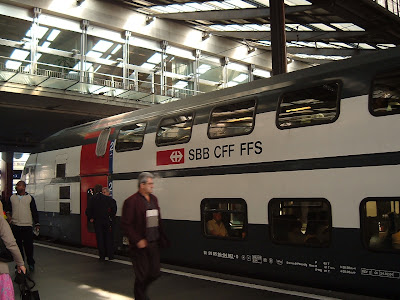

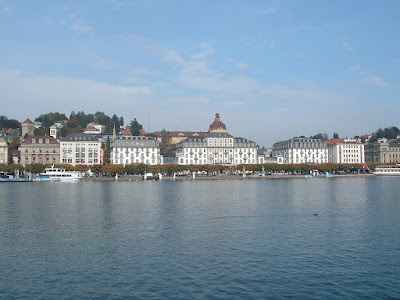
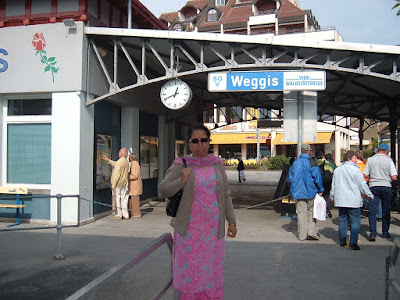

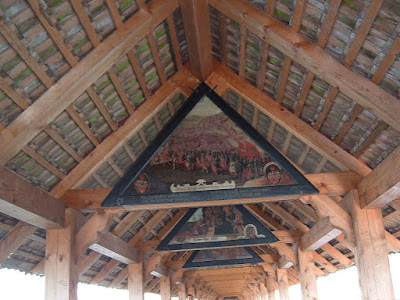
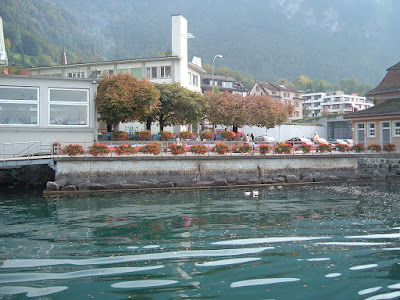
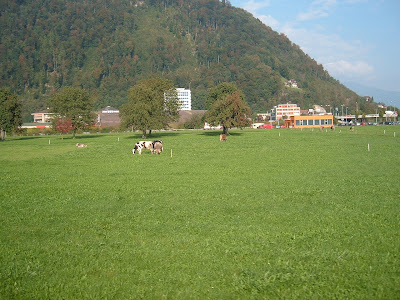




No comments:
Post a Comment